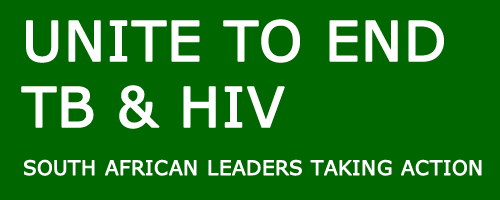 The new National Strategic Plan is a declaration of war on the HIV, TB and STI epidemics. It expresses government’s efforts to drastically reduce the incidence of these conditions, eliminate mother-to-child HIV transmission and cut new infections among adolescent girls and young women.
The new National Strategic Plan is a declaration of war on the HIV, TB and STI epidemics. It expresses government’s efforts to drastically reduce the incidence of these conditions, eliminate mother-to-child HIV transmission and cut new infections among adolescent girls and young women.
The new National Strategic Plan (NSP) on HIV, tuberculosis (TB) and sexually transmitted infections (STIs) is expected to reduce TB incidents by 30 percent and decrease new HIV infections by 60 percent.
Deputy President Cyril Ramaphosa announced this at the launch of the NSP 2017-2022 in Bloemfontein recently.
The NSP usually runs for five years. The plan ended in March 2017.
Deputy President Ramaphosa said the NSP is closely aligned with the National Development Plan, locating the struggle against HIV, TB and STIs within the broader struggle for economic and social development.
“Working together, we seek to reduce TB incidence by at least 30 percent, from 450 000 to
315 000. We must drastically reduce new infections of HIV by 60 percent from 270 000 in 2016 to less than 100 000 by 2022,” the deputy president said.
He added that the government wants to eliminate mother-to-child HIV transmission and cut new infections among adolescent girls and young women from 2 000 each week to less than 800.
Last year the deputy president launched a campaign to prevent HIV among young women and adolescent girls.
Almost 2 000 new HIV infections occur among young women and adolescent girls aged between 15 and 24 in South Africa each week.
The campaign, She Conquers, is being implemented as part of the effort to reduce HIV transmission and its impact.
“She Conquers is focused on decreasing HIV infections, reducing teen pregnancy, keeping young people in school, ending sexual and gender-based violence and creating economic opportunities for young people.”
NSP has clear goals
Deputy President Ramaphosa said the NSP will focus on eight strategic goals to combat HIV, TB and STIs.
- Goal one is to accelerate prevention to reduce new HIV, TB and STI infections.
- Goal two is to reduce morbidity and mortality by providing HIV, TB and STI treatment, care and adherence support for all.
- Goal three is to reach all key and vulnerable populations with customised and targeted interventions.
- Goal four is to address the social and structural drivers of HIV, TB and STI infections.
- Goal five is to ground the response to HIV, TB and STIs in human rights principles and approaches.
- Goal six is to promote leadership and shared accountability for a sustainable response to HIV, TB and STIs.
- Goal seven is to mobilise resources to support the achievement of NSP goals and ensure a sustainable response.
- Goal eight is to strengthen strategic information to drive progress towards the achievement of NSP goals.
Behavioural change is necessary
“We are here to affirm that the dream of an Aids-free generation is within our reach,” Deputy President Rama-
phosa said. “We are here to demonstrate our resolve to build a world free from the devastation of preventable and curable diseases like TB.
“We know that to be infected with HIV and TB is not a death sentence,” Deputy President Ramaphosa said. “We know that our best chance to defeat the co-infections of HIV and TB lies in behavioural change to stop the spread of infection.”
The launch of the NSP 2017-2022 is a pivotal moment in South Africa’s response to the HIV, TB and STI epidemics.
The slogan of the new NSP is “Let Our Actions Count” – a call to action for all South Africans to play a part in achieving the goals of the plan.
This year, government is targeting mainly leaders of society, such as parliamentarians, members of provincial legislatures, councillors, traditional leaders, business leaders, religious leaders and civil society to commit themselves to the fight against these epidemics and to engage their communities.

 Facebook
Facebook Twitter
Twitter WhatsApp
WhatsApp